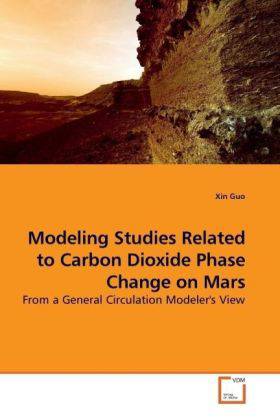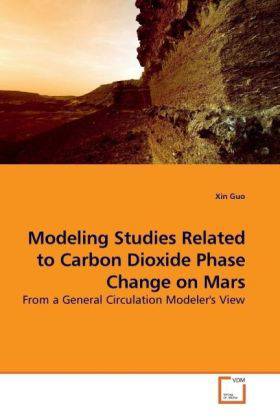
- Afhalen na 1 uur in een winkel met voorraad
- Gratis thuislevering in België vanaf € 30
- Ruim aanbod met 7 miljoen producten
- Afhalen na 1 uur in een winkel met voorraad
- Gratis thuislevering in België vanaf € 30
- Ruim aanbod met 7 miljoen producten
Zoeken
Modeling Studies Related to Carbon Dioxide Phase Change on Mars
From a General Circulation Modeler's View
Xin Guo
Paperback | Engels
€ 48,45
+ 96 punten
Omschrijving
Mars is the closest neighbor to our very own Earth in the solar system. The flyby of Mariner 4 in 1965 and the Viking missions in the 1970s mark the beginning of modern Mars exploration. A new generation of space missions started in late 1990s revolutionized people s view of this planet. Their observations make research in Mars evolution history, current environment, and even future utilization of human being possible and valid. Among many research topics in Mars Science, atmospheric science is one of the most interesting and important subjects. This book is devoted to different studies related to the phase change of the most abundant atmospheric species, carbon dioxide, on Mars. Various aspects of carbon dioxide phase change, including its annual cycle, frost cap formation, perennial ice cap mechanism, non-condensable gas foot print, and sophisticated microphysics crystal growth processes are discussed from a General Circulation Modeler s view, which focuses on the global climate and possible evolution in the past. Readers may find this book handy when they try to establish a high-level understanding of the important issues related to modeling the atmosphere of this red planet.
Specificaties
Betrokkenen
- Auteur(s):
- Uitgeverij:
Inhoud
- Aantal bladzijden:
- 160
- Taal:
- Engels
Eigenschappen
- Productcode (EAN):
- 9783639191271
- Uitvoering:
- Paperback

Alleen bij Standaard Boekhandel
+ 96 punten op je klantenkaart van Standaard Boekhandel
Beoordelingen
We publiceren alleen reviews die voldoen aan de voorwaarden voor reviews. Bekijk onze voorwaarden voor reviews.








